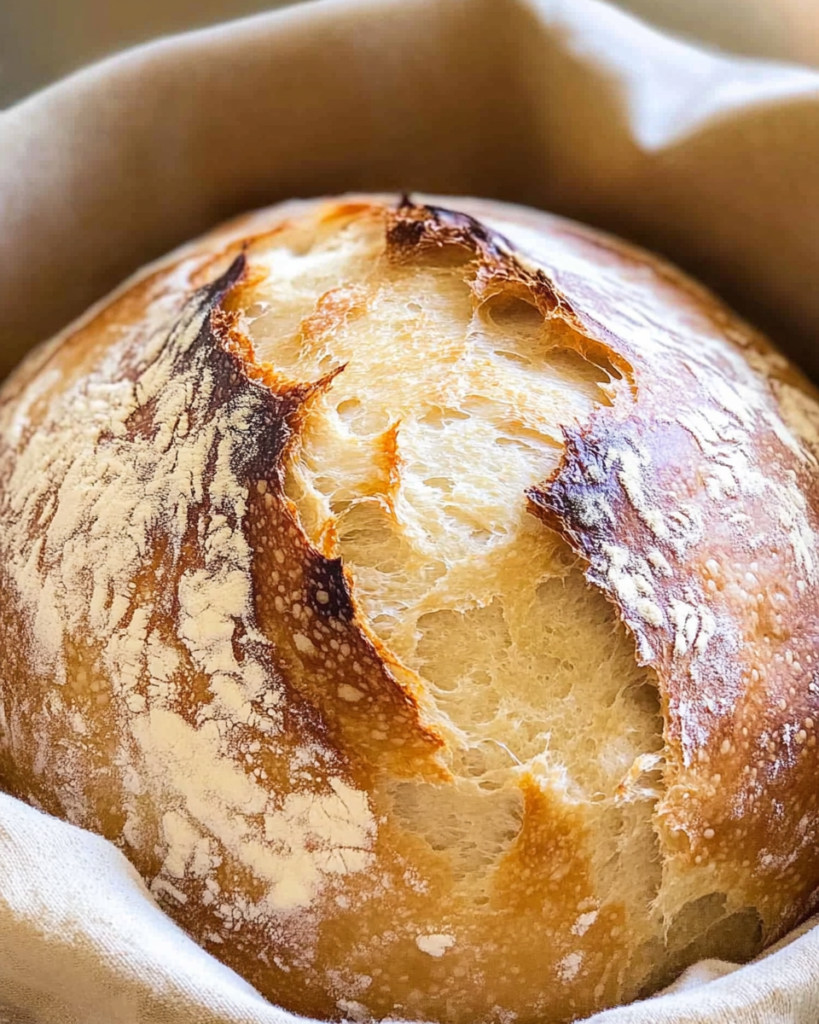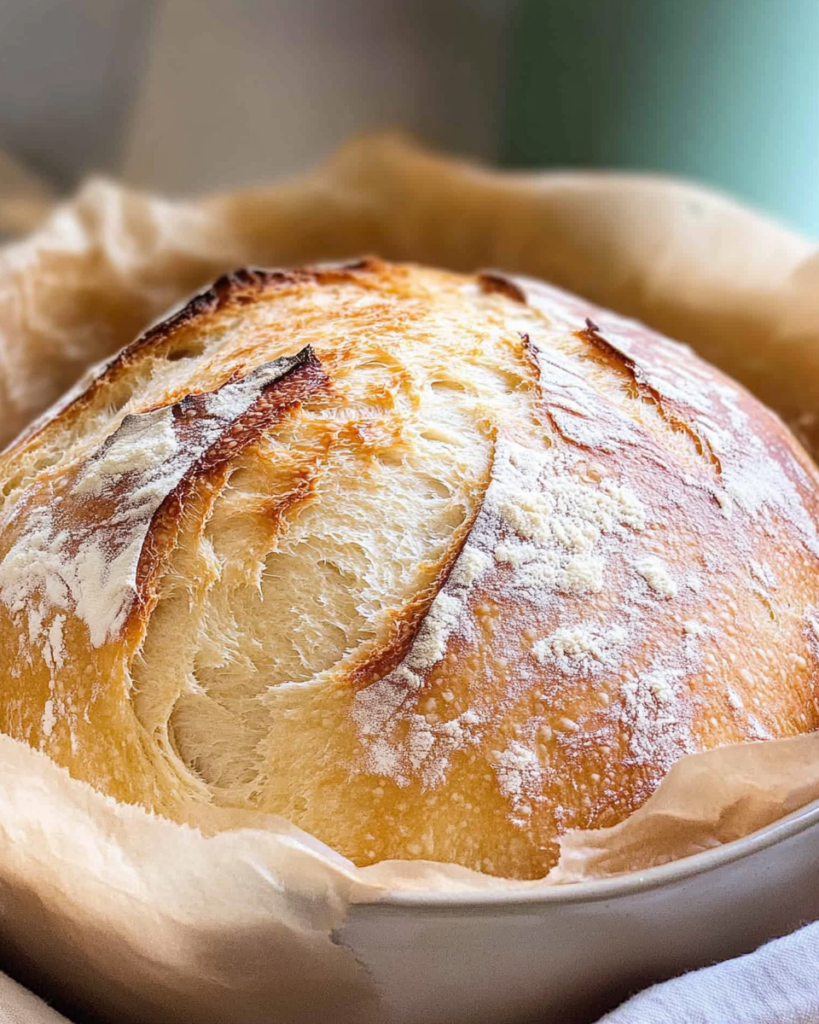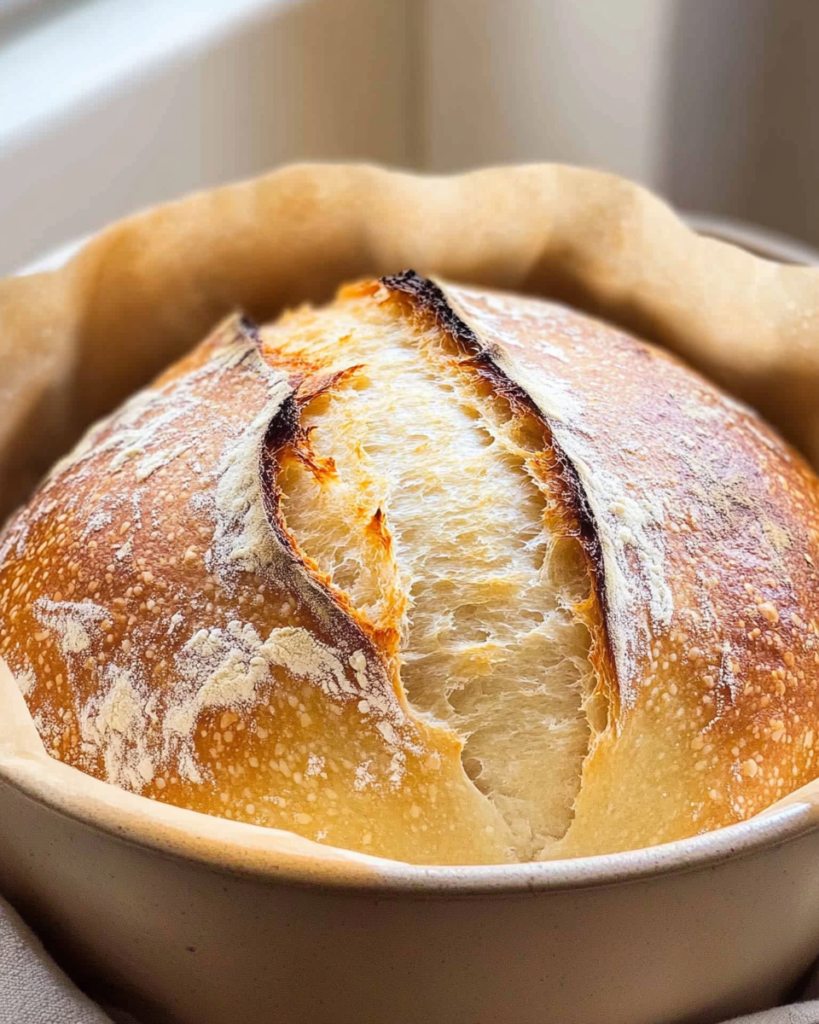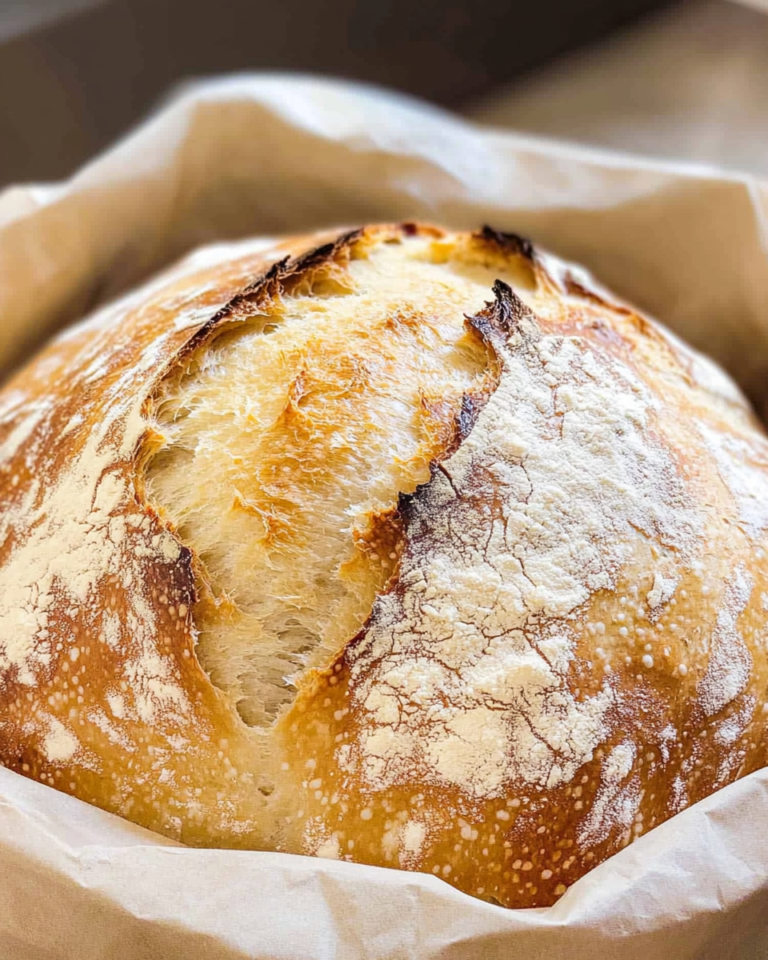There’s something magical about bakery-style sourdough bread. I still remember walking through the streets of New York on a chilly fall morning, drawn to the aroma of freshly baked sourdough wafting from a corner bakery in Brooklyn. The crust was golden and crisp, the crumb airy yet chewy, and the tang perfectly balanced. Re-creating that experience at home became one of my most rewarding kitchen adventures.
In this guide, I’ll share how you can make bakery-style sourdough bread in your own kitchen, no matter your skill level. From the starter to the final bake, you’ll learn techniques that deliver a rustic loaf bursting with flavor, texture, and character.
Thanks for being here. I hope these recipes bring warmth to your kitchen and a little joy to your day.
Table of Contents

What Makes Bakery-Style Sourdough Bread Special?
The appeal of bakery-style sourdough lies in its flavor, texture, and craftsmanship. Unlike standard bread, sourdough develops through natural fermentation. Wild yeast and lactic acid bacteria work together to create the tangy flavor and chewy structure that bakers — and bread lovers — crave.
Flavor, Texture, and Aroma
- Tangy flavor: Achieved by balancing fermentation times.
- Open crumb texture: Large air pockets from proper hydration and folding.
- Golden crust: Achieved with steam during baking.
- Aromas: Nutty, earthy, and slightly sweet tones.
Health Benefits of Sourdough Bread
Sourdough isn’t just delicious — it’s also nutritious. According to Healthline, it’s easier to digest than regular bread thanks to fermentation breaking down gluten. The long rise lowers its glycemic index, which helps keep blood sugar stable. Plus, sourdough contains prebiotics and beneficial acids that support gut health.
Compared to store-bought bread, homemade sourdough is less processed, giving you control over the ingredients and fermentation time.
Essential Ingredients for Bakery-Style Sourdough Bread
At its core, sourdough bread only needs four ingredients: flour, water, salt, and a starter. But the quality of each ingredient makes a big difference.
- Flour: Bread flour gives strength, while whole wheat or rye adds depth of flavor.
- Starter: A healthy, bubbly starter is the backbone of bakery-style sourdough.
- Water: Filtered water avoids chlorine, which can harm your starter.
- Salt: Enhances flavor and regulates fermentation.
Ingredient Substitutions and Variations
- Gluten-free: Use a blend of rice, sorghum, and potato flour.
- Whole grain lovers: Increase whole wheat up to 50% for nuttier taste.
- Add-ons: Seeds, oats, or herbs like rosemary elevate texture and flavor.
Step-by-Step Method for Bakery-Style Sourdough Bread

Making sourdough is a process of patience and care. Each step builds on the last, creating structure and flavor.
- Mix & Autolyse – Mix flour and water, rest for 1 hour.
- Add Starter & Salt – Fold in bubbly starter and salt.
- Stretch & Fold – Every 30 minutes, stretch dough gently, repeat 4–6 times.
- Bulk Fermentation – Let dough rise until doubled in size.
- Shaping – Gently shape into rounds or batards.
- Proofing – Place in a floured banneton, cover, refrigerate overnight.
- Bake – Score with a lame, bake in Dutch oven with steam.
Troubleshooting Common Issues
- Flat loaf: Starter wasn’t strong enough.
- Dense crumb: Dough under-proofed or not enough hydration.
- Gummy inside: Over-proofed or underbaked.
- Pale crust: Not enough steam or oven heat.
Tools and Equipment for Bakery-Style Results
Professional bakeries use steam ovens and specialized mixers, but you can achieve bakery-quality at home with a few tools.
- Dutch oven: Traps steam for a crisp crust.
- Lame: For scoring patterns.
- Proofing baskets (bannetons): Support dough shape.
- Digital scale: Precision matters in baking.
- Thermometer: Ensures the bread is baked through (200–210°F internal).
Do You Really Need Fancy Tools?
Not necessarily. A heavy pot with a lid can replace a Dutch oven, and a sharp razor works for scoring. Even a colander lined with a towel can stand in for a banneton.
Flavor Variations for Bakery-Style Sourdough Bread
Once you master the basic loaf, try these bakery-worthy variations:
- Garlic Rosemary Sourdough: Infuse roasted garlic and chopped rosemary.
- Seed-Crusted Loaf: Roll dough in sesame, flax, or sunflower seeds.
- Cinnamon Swirl Sourdough: Add a sweet twist for breakfast.
- Olive & Sun-Dried Tomato: Perfect for savory dinners.
Nutritional Breakdown of Bakery-Style Sourdough Bread
| Nutrient (per slice, 50g) | Amount |
|---|---|
| Calories | 120 |
| Carbohydrates | 24g |
| Protein | 4g |
| Fiber | 2g |
| Fat | 0.5g |
| Sodium | 180mg |
Tips for Beginner Bakers

Making bakery-style sourdough may feel intimidating, but with practice, it becomes second nature.
- Timing is everything: Start your dough in the morning for an overnight proof.
- Starter care: Feed it daily when active; refrigerate when not.
- Open crumb tips: Handle dough gently, use higher hydration.
- Storage: Keep sourdough wrapped in a cotton towel or freeze sliced for easy toasting.
FAQs – Bakery-Style Sourdough Bread
How do I make my sourdough more sour?
Extend the fermentation time and use more whole grain flour.
Why is my sourdough not rising?
Your starter may be weak — feed it for several days before baking.
Can I bake sourdough without a Dutch oven?
Yes, use a baking stone with a pan of water to create steam.
How do bakeries get such a crisp crust?
They use steam ovens, but you can replicate it with a Dutch oven.
How long should sourdough proof?
Typically 12–18 hours at cool room temperature or in the fridge.
Conclusion
Baking bakery-style sourdough bread at home is a journey of patience, practice, and reward. With each loaf, you’ll grow more confident, discovering the joy of homemade bread that rivals your favorite bakery.
If you’re ready for more homemade comfort, check out other bread recipes on Grid Recipes.
Print
Bakery-Style Sourdough Bread
Description
Learn how to make bakery-style sourdough bread at home with a crisp crust, chewy crumb, and tangy flavor. Easy step-by-step recipe included!
Ingredients
- 500g bread flour
- 100g whole wheat flour
- 375g water (filtered, room temperature)
- 100g active sourdough starter
- 10g salt
Instructions
- Mix flour and water, rest (autolyse) 1 hour.
- Add starter and salt, fold gently.
- Stretch and fold every 30 minutes for 2–3 hours.
- Bulk ferment until dough doubles in size (4–6 hours).
- Shape into rounds, place in bannetons, refrigerate overnight.
- Preheat Dutch oven to 475°F.
- Score loaves, bake covered 20 minutes, uncovered 25 minutes.
- Cool fully before slicing.
Notes
Feed starter the night before for peak activity.
To enhance sourness, extend fermentation time.
For softer crust, wrap bread in a towel after baking.
Nutrition
- Calories: 120
- Sodium: 180 mg
- Fat: 0.5g
- Carbohydrates: 24g
- Fiber: 2g
Find it online: https://gridrecipes.com/bakery-style-sourdough-bread/



